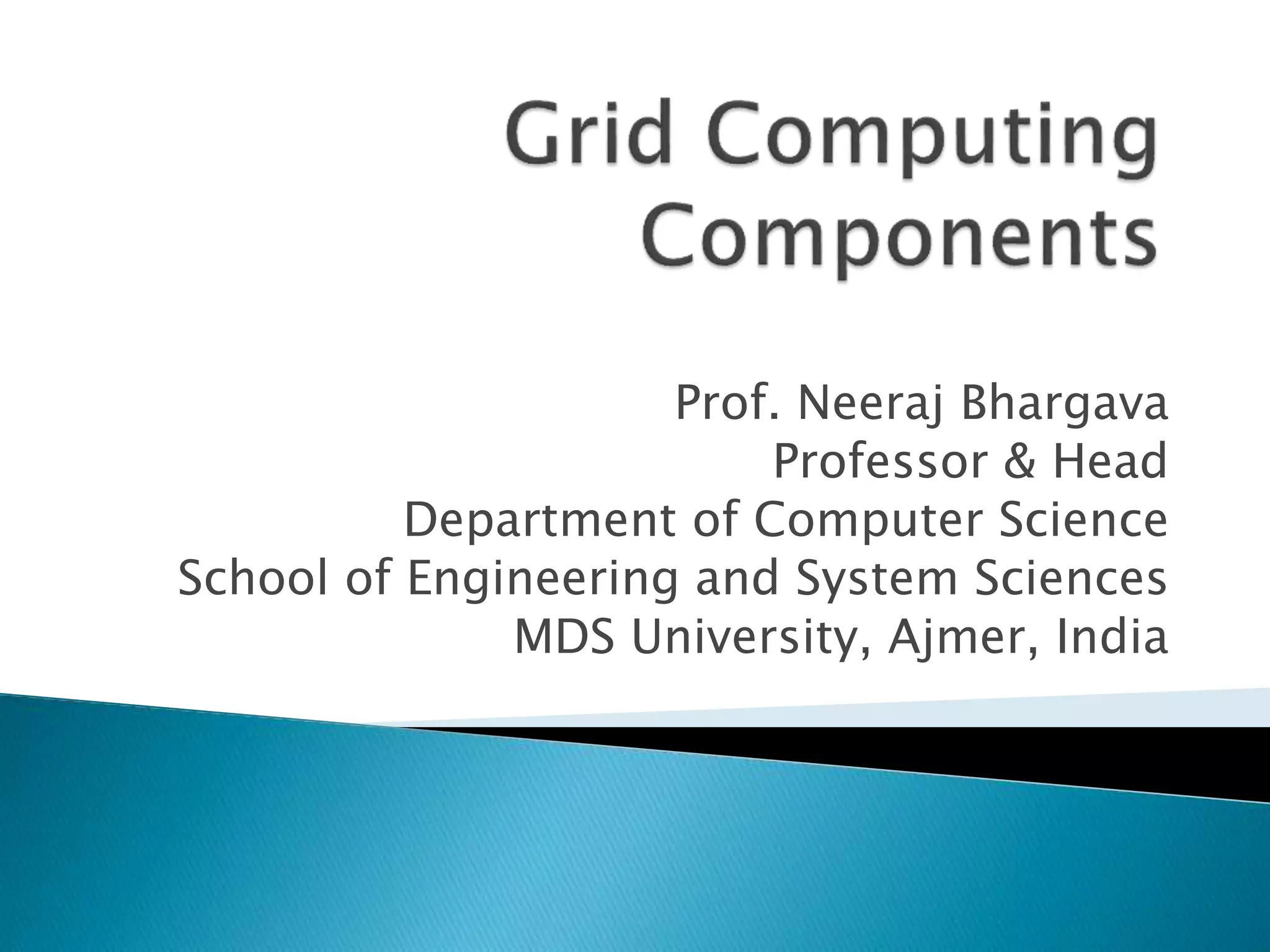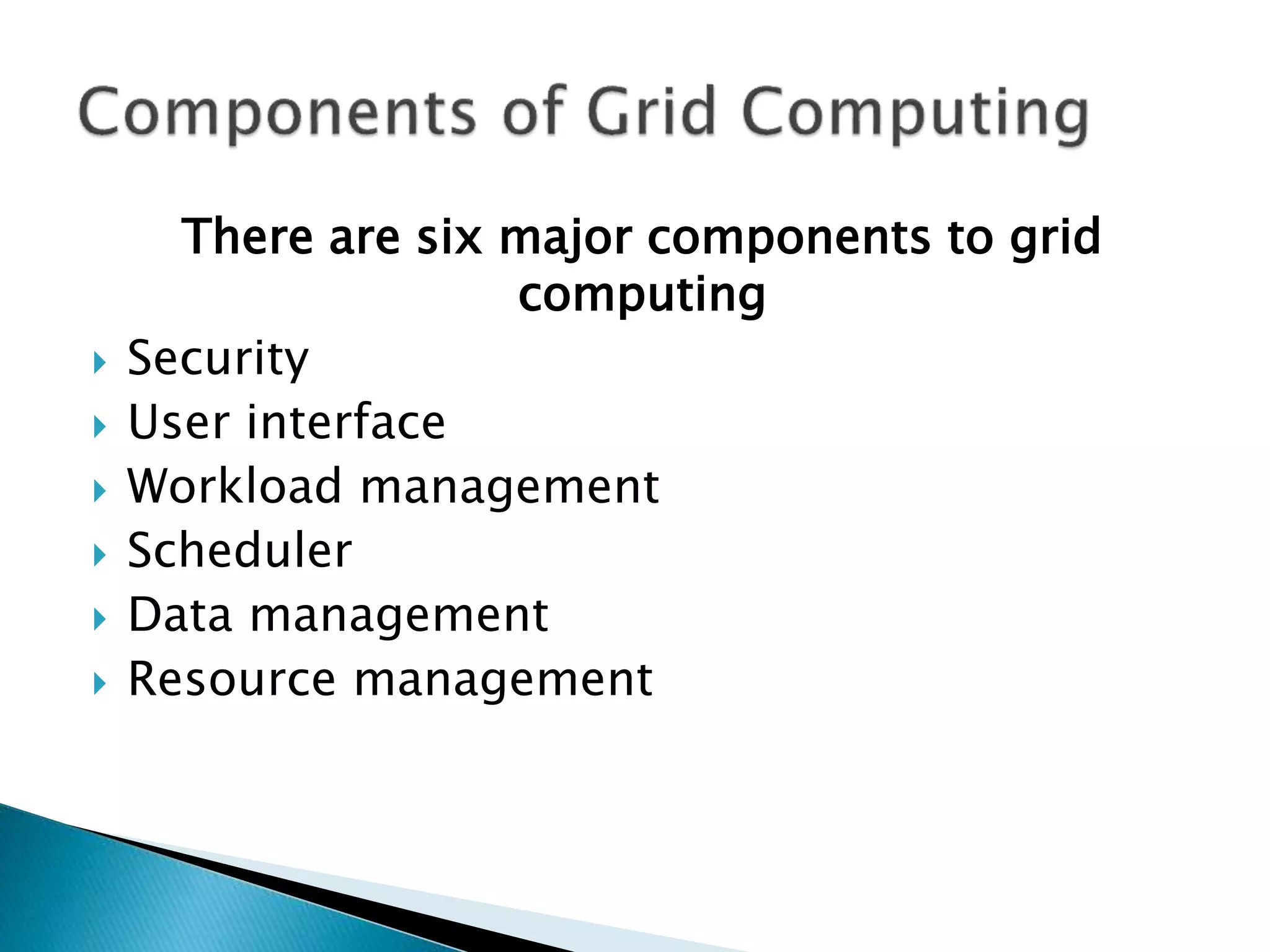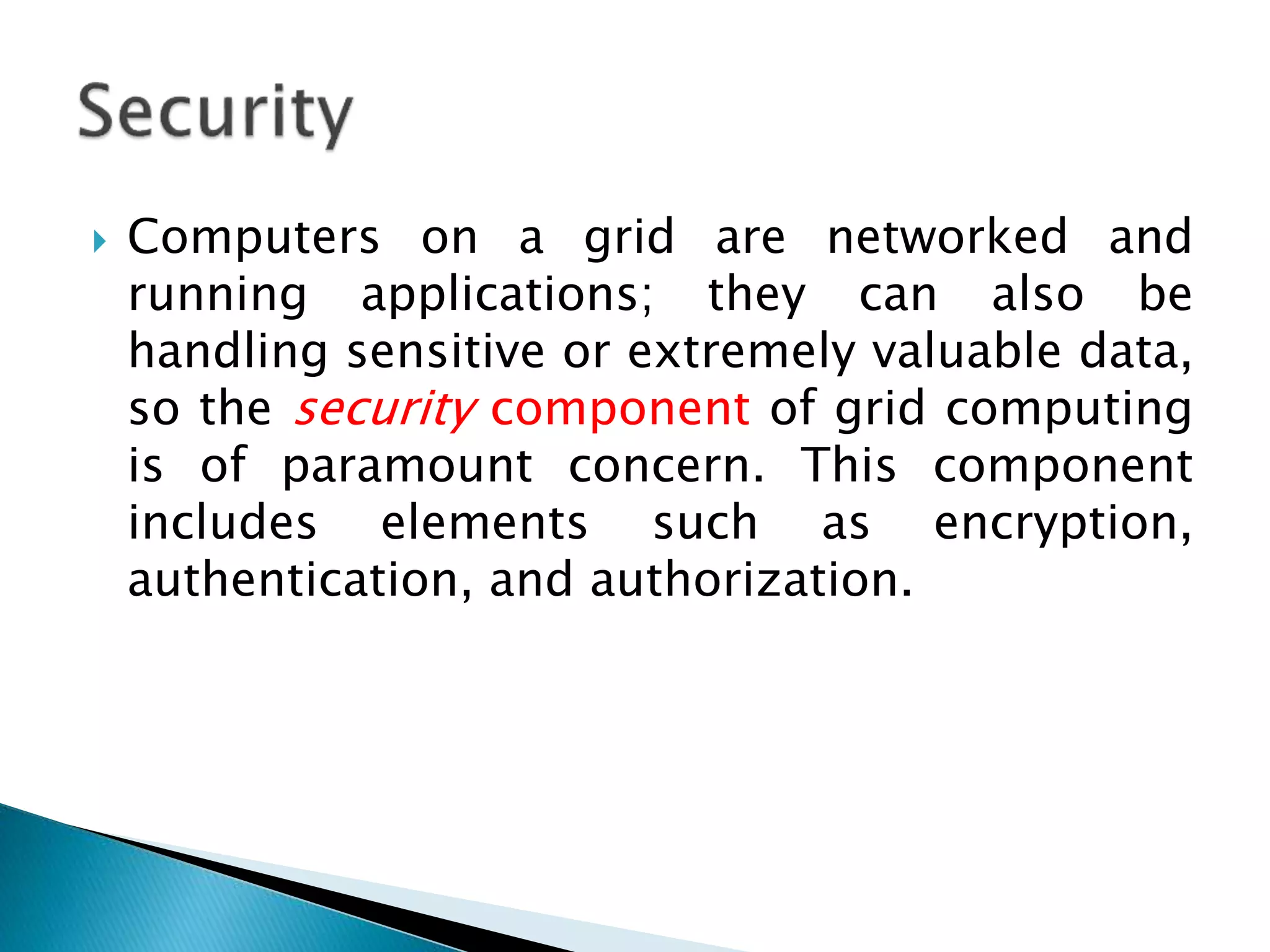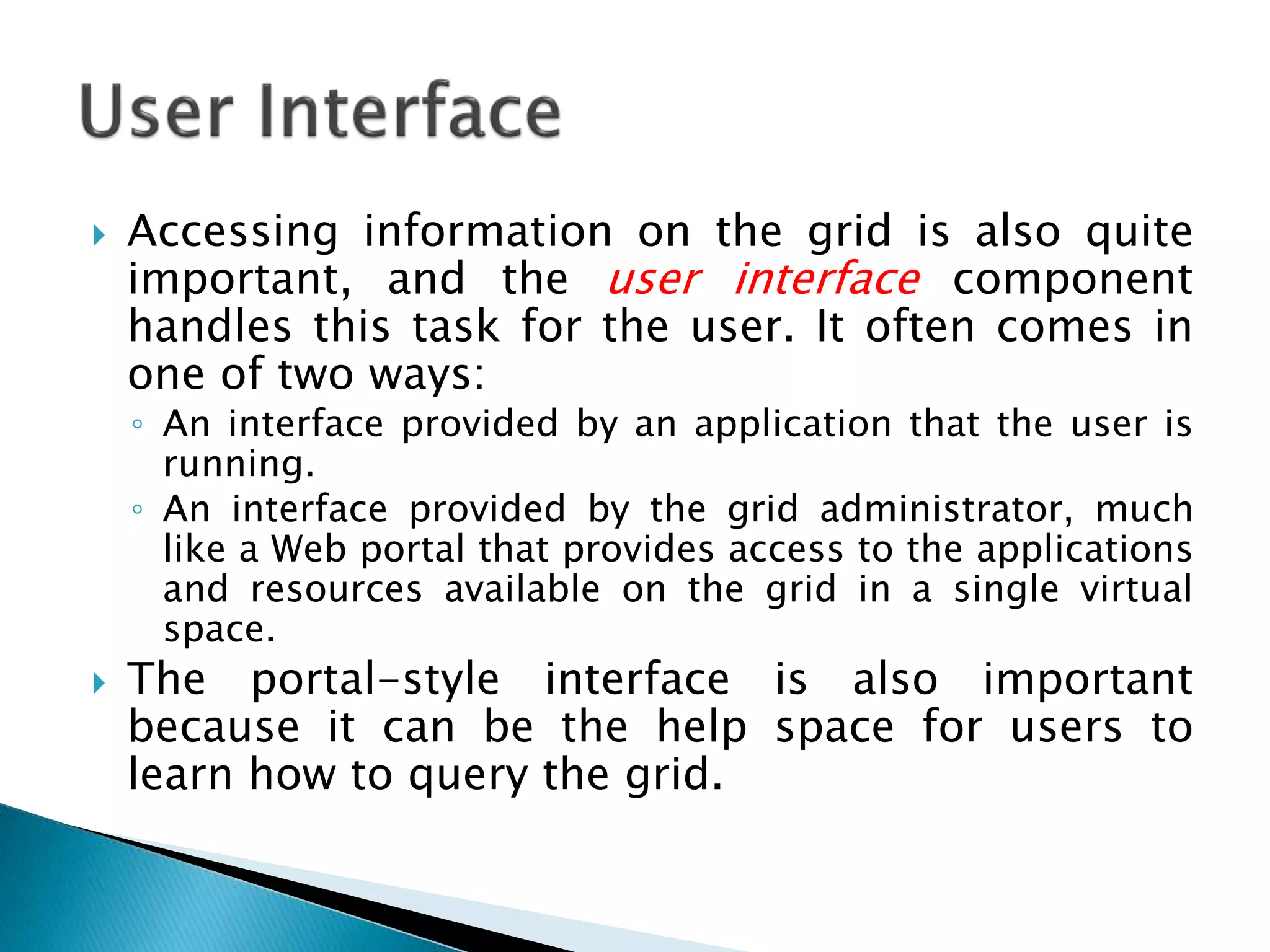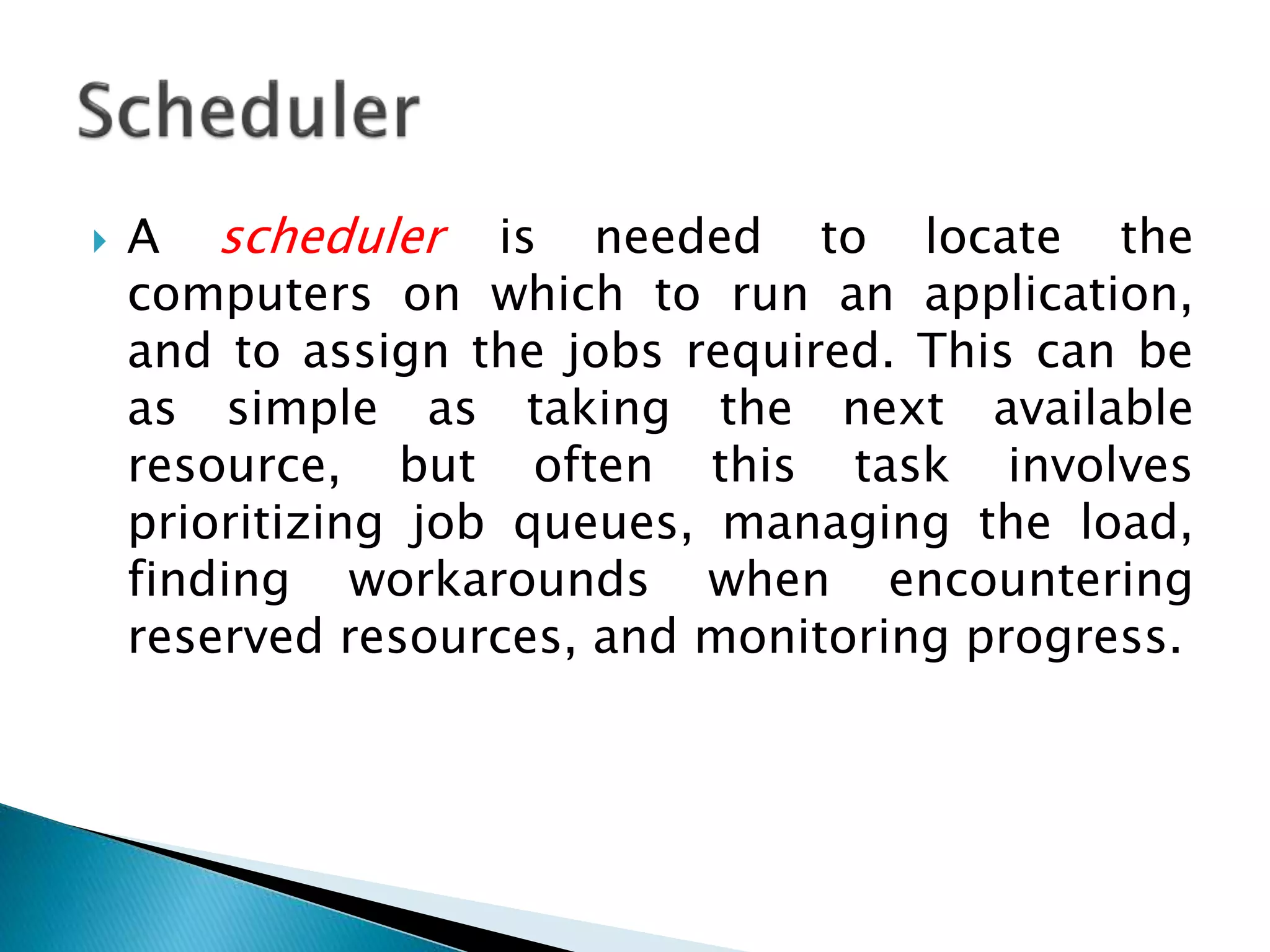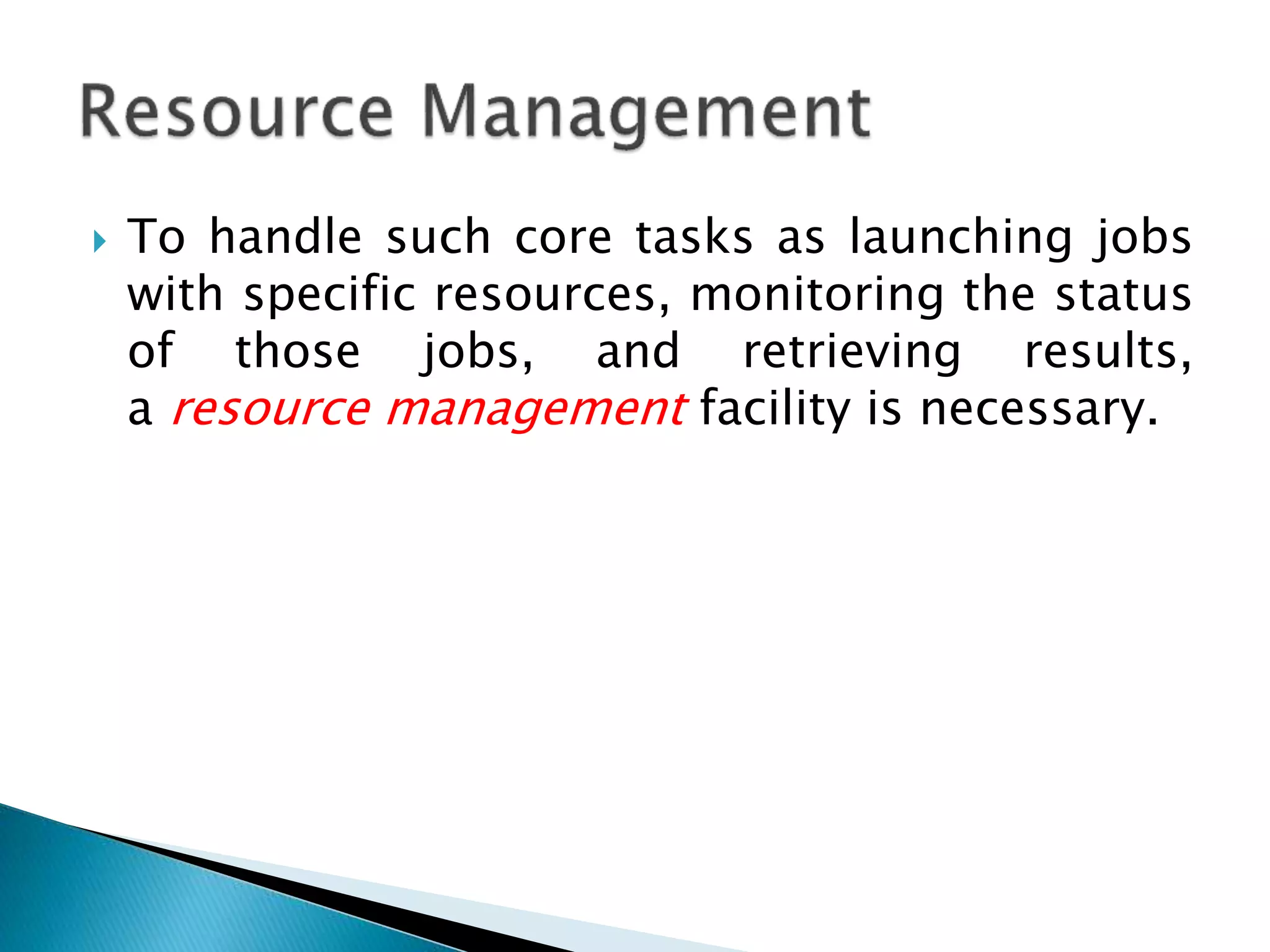There are six major components to grid computing: 1) Security, which includes elements like encryption, authentication, and authorization to securely handle sensitive data across networked computers. 2) User interface to access information on the grid, often through an application interface or portal. 3) Workload management for applications to discover available resources and their status. 4) Scheduler to locate computers to run applications and assign jobs, taking into account queues, load, and resource availability. 5) Data management to securely move data as needed to the right place across machines for applications. 6) Resource management to handle tasks like launching jobs, monitoring status, and retrieving results.
